
Hornworms are one of the most common tomato plant pests.
If you have small children in your life, then you’ve probably read Eric Carle’s book, ‘The Very Hungry Caterpillar,” about a million times. I’m convinced the real-life caterpillar that inspired this book is none other than the hornworm.
These bright green caterpillars can easily strip your tomato plants down to bare stems in a matter of days.
When it comes to garden pests, hornworms are at the top of every tomato grower’s list.
There are two types of hornworms commonly found here in the states – the Manduca sexta, or the tobacco hornworm and the Manduca quinquemaculata, or the tomato hornworm.
These giant caterpillars can be found nearly everywhere in the U.S., some parts of Northern Mexico and in Southern Canada.
Yeah, I’m not ashamed to admit it.
They’re freakishly large, often as long and around as big as your pinky.
Hornworms are bright green, can have crazy looking spots and stripes, and sport an intimidatingly large ‘stinger’ attached to their backside. These caterpillars make weird clicking sounds when you pick them up. And if you scare them, they excrete a messy olive-green liquid.
Oddly enough, all of this is nature’s way of compensating for the fact that they’re pretty much harmless – unless you’re a tomato plant.
Hornworms don’t bite or sting, they can’t. That stinger is basically a hood ornament…on the trunk. (It made more sense in my head.)
These big guys are excellent eaters and can completely defoliate a tomato plant in a day or two.
They’ll even eat the young tomatoes too. While they’re mostly attracted to tomato plants, hornworms will also snack on potatoes, eggplant, and pepper plants. And of course, the tobacco hornworm eats tobacco leaves. Left unchecked or caught too late, you can say goodbye to this season’s crop.
These caterpillars do major damage to nightshade plants in a matter of days.
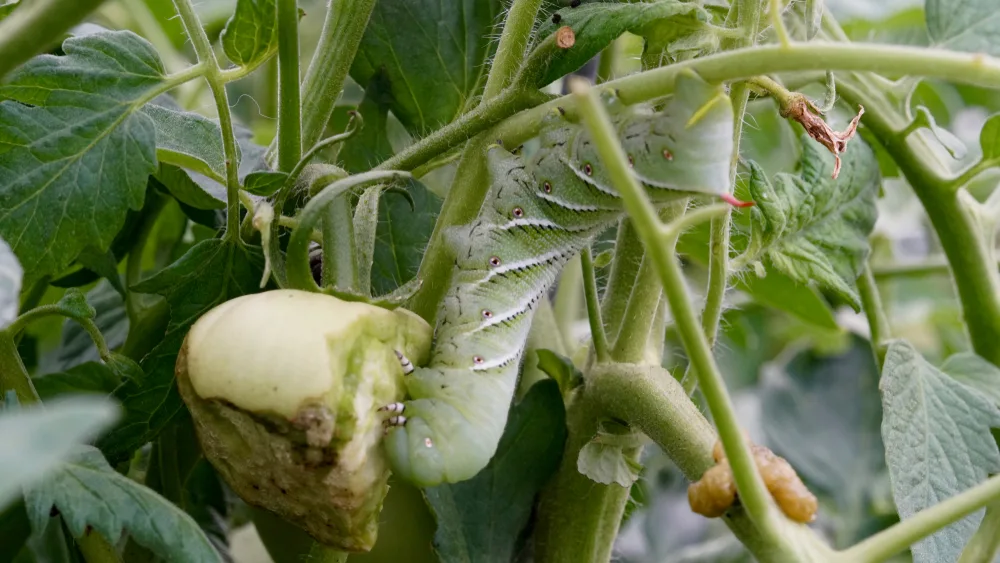
The good news is hornworms are relatively easy to get rid of without using harsh pesticides.
Spotting Hornworms
After an entire season of no tomatoes, thanks to these guys, I’ve wised up and now do a daily walk through to look for pest damage. Giving your garden the once over every day is a good idea in general. It’s easiest to control pests and disease if you catch them early on.
These guys typically show up around midsummer. And you can spot them pretty quickly. They leave some pretty obvious signs that they’re hanging around.
One of the most noticeable ways to spot a hornworm infestation is the rapid defoliation of your crop. If you suddenly notice your tomato leaves are looking rather sparse, it’s time to take a closer look.
Look for poop. And lots of it. Check the ground and leaves for dark green bits of caterpillar poop. With all of that eating, they tend to leave a ‘trail’ of evidence.

You’ll find lots of these little pellets on the ground when you’ve got hornworms.
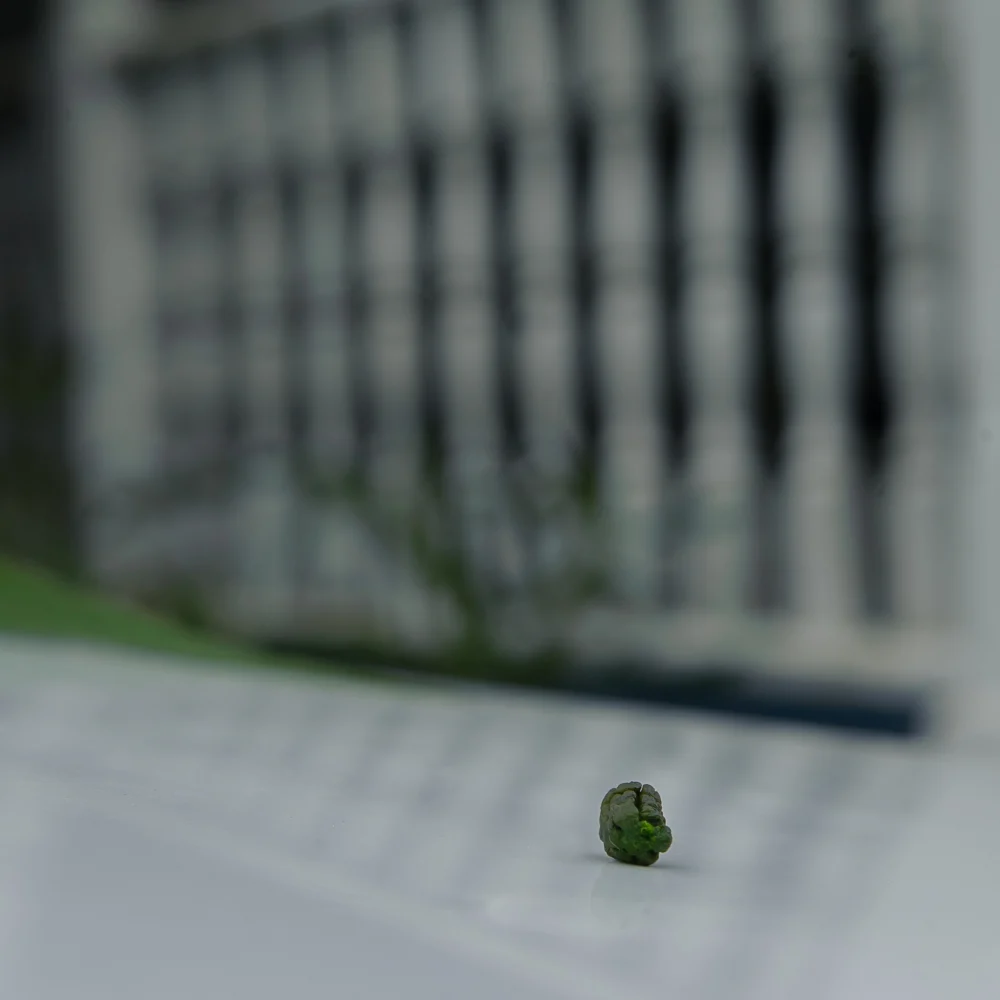
And of course, when you’re a giant caterpillar, it’s pretty hard to hide. In the morning, look for the caterpillars to be in plain sight at the top of the plants. During the hottest part of the day, hornworms will be lower on the plant and under the leaves to avoid the sun.
Spotting Hornworms Under The Cover Of Darkness
For the easiest way to scout out these destructive pests, you need to go searching for them once the sun goes down. Get yourself a UV flashlight and these caterpillars will be illuminated like a Christmas tree.
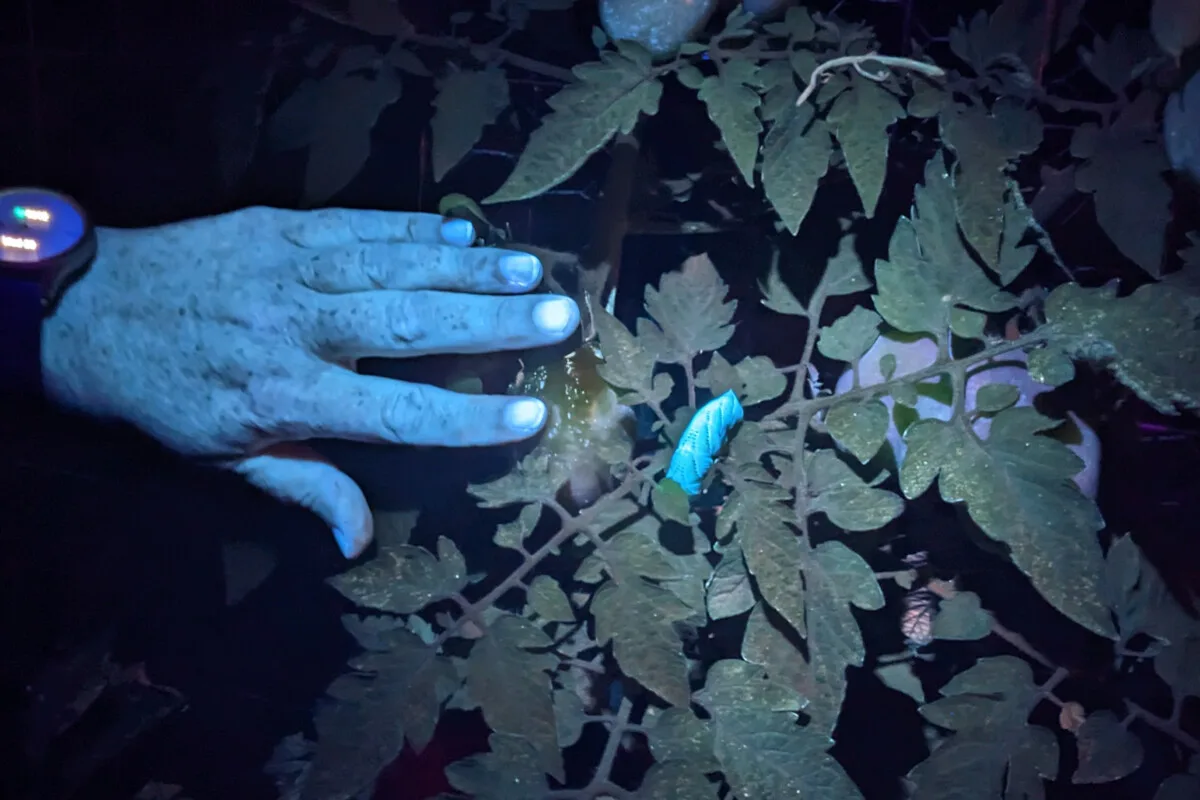
Here’s my guide for hunting hornworms with a UV flashlight.
Now that you’ve found them, how do you get rid of them?
Enlist the help of other bugs. The braconid wasp is a brutal parasitoid that uses the hornworm for rearing it’s young. If you find hornworms that covered with tiny white fibery, cocoons leave them alone. They’ve been infested and are carrying the next generation of pest-destroyers on their backs.
You can rest assured that those hornworms won’t be eating your tomato plants for much longer.
Braconid wasps use the hornworm as a host, eventually killing the hornworm.
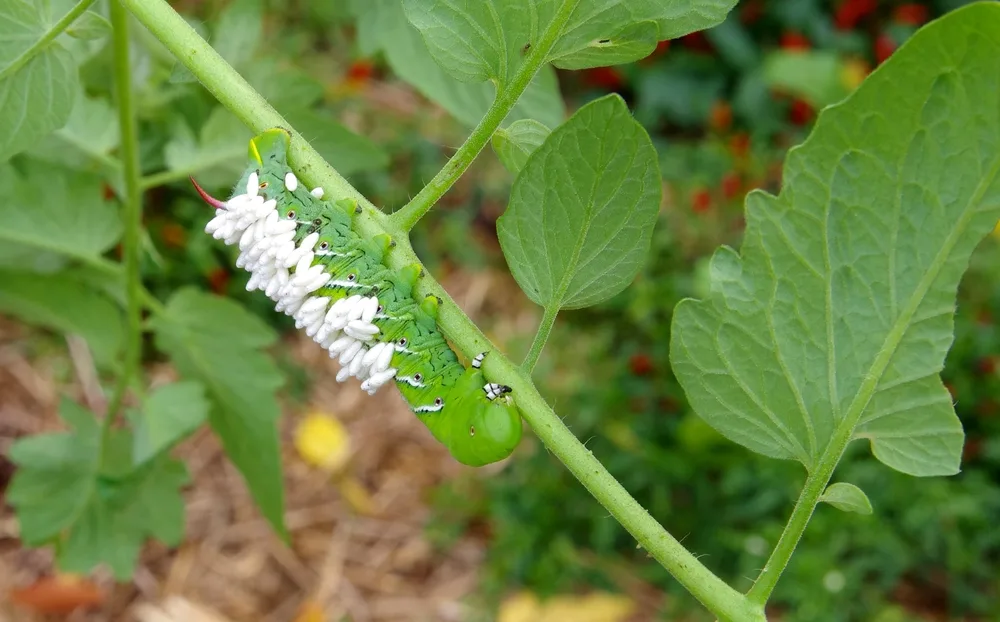
Ladybugs and green lacewings are also great at controlling hornworms, as they eat the larvae and eggs. Check out our full list of beneficial bug allies to employ in your garden.
Get the birds in on the action. Keeping a bird feeder or suet near your garden will attract birds. And quite a few of our feathered friends enjoy eating hornworms. You might consider putting a feeder right in among your tomato plants.
When it comes to controlling hornworms, I find the best solution is also the easiest.
Just pick them off.
If you get a little squeamish around bugs, put a pair of gardening gloves on. Remember, they can’t hurt you as they don’t bite or sting. Just thoroughly look over your plants and pick off the caterpillars.
You can relocate them or destroy them. If you have chickens, give your flock the caterpillars you find in your garden. Your girls will thank you for this protein-rich snack by rewarding you with more eggs. Or, if you keep a pet lizard or reptile, they also appreciate these tasty green snacks.
If you’ve caught them too late and you’re dealing with an infestation, you may wish to consider using BT or bacillus thuringiensis.
This naturally occurring bacteria is target specific (leaf-eating caterpillars), so you won’t be wiping out other beneficial bugs in your garden. It works by breaking down the gut of the caterpillar once ingested.
While thuricide BT is a pesticide, it’s a pollinator-safe option, which means it will do the least amount of damage to the insect population in your garden but still save your tomato crop.
Save next year’s tomatoes too.
Hornworms survive the winter as pupae buried in the soil. One of the best ways to prevent them from coming back next year is by tilling your garden under in the fall and again in the spring before planting.
Tilling the soil will disrupt the life cycle of many overwintering pests living in the ground, not just hornworms.
Rotating crops each year is another way to prevent the next generation of hornworms from finding your precious tomatoes.
Pest or Pollinator?
Here’s the thing about hornworms, they end up turning into some beautiful moths. And the tomato hornworm specifically, pupates into the hawk or sphinx moth. These pretty little pollinators are so large that they’re often mistaken for hummingbirds flitting around flowers.
All grown up, that pesky caterpillar becomes a pollinator.
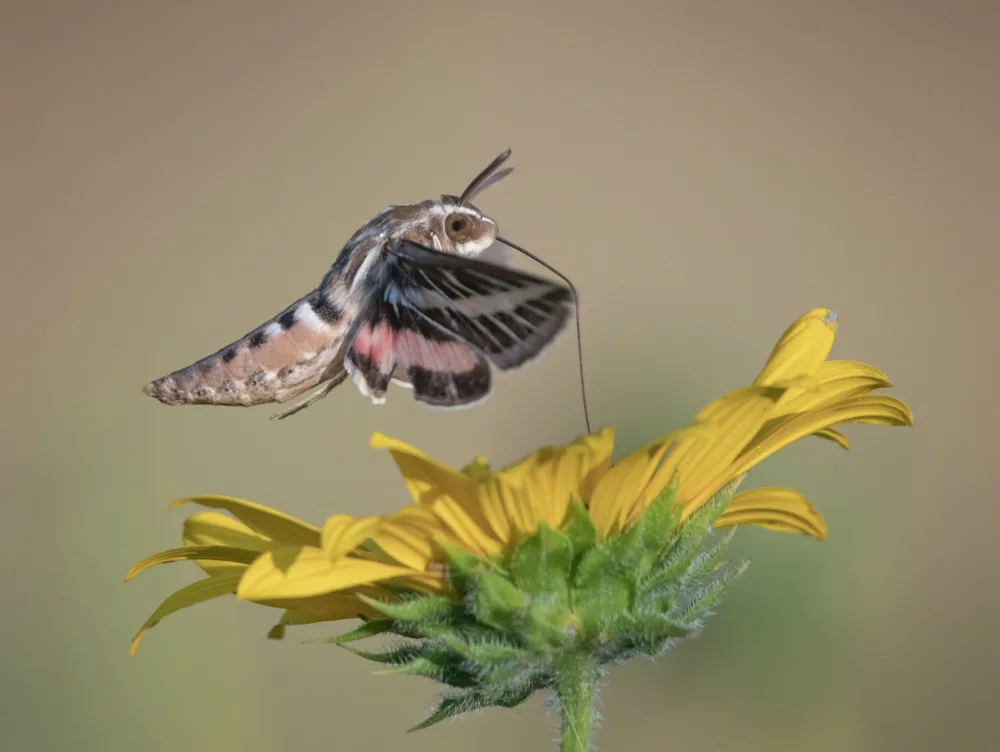
Once again, we find ourselves caught in the question of what makes a bug beneficial or a pest? A lot of it depends on what stage of the life cycle the insect finds its way into your garden. But it’s certainly something to take into account when considering how you’re going to deal with hornworms.
Some folks choose to destroy them completely. You may want to spare a few and relocate them. Or consider planting a couple of tomato plants away from your garden specifically for the rearing of the next generation of hawk moths.
Because of their gentle nature, hornworms make an excellent bug for teaching kids about the life cycle of moths and butterflies. Grab one or two and set them up in a jar with a few tomato plant stems (use the suckers which you’ll be pruning off anyway) and let your kiddos enjoy watching this giant caterpillar morph into a big, beautiful moth. Release the moth so it can pollinate flowers in your garden.
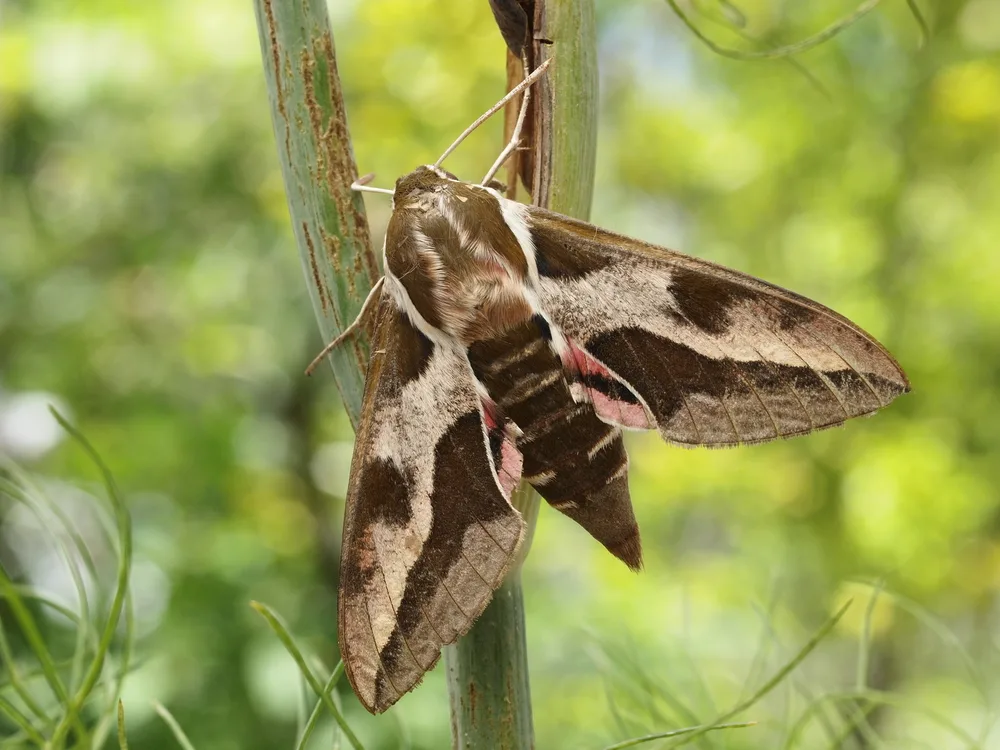
No matter how you choose to deal with an army of very hungry caterpillars, you’ll be ready when you find them in among your plants.

Get the famous Rural Sprout newsletter delivered to your inbox.
Including Sunday musings from our editor, Tracey, as well as “What’s Up Wednesday” our roundup of what’s in season and new article updates and alerts.

